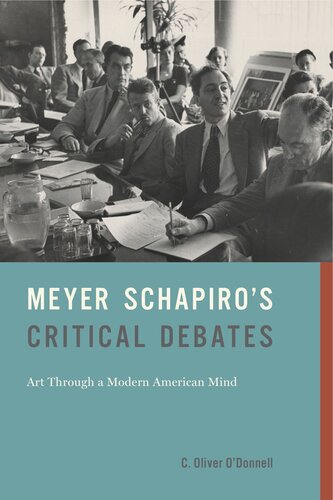

Most ebook files are in PDF format, so you can easily read them using various software such as Foxit Reader or directly on the Google Chrome browser.
Some ebook files are released by publishers in other formats such as .awz, .mobi, .epub, .fb2, etc. You may need to install specific software to read these formats on mobile/PC, such as Calibre.
Please read the tutorial at this link: https://ebookbell.com/faq
We offer FREE conversion to the popular formats you request; however, this may take some time. Therefore, right after payment, please email us, and we will try to provide the service as quickly as possible.
For some exceptional file formats or broken links (if any), please refrain from opening any disputes. Instead, email us first, and we will try to assist within a maximum of 6 hours.
EbookBell Team

4.0
36 reviewsDescribed in the New York Times as the greatest art historian America ever produced, Meyer Schapiro was both a close friend to many of the famous artists of his generation and a scholar who engaged in public debate with some of the major intellectuals of his time. This volume synthesizes his prolific career for the first time, demonstrating how Schapiro worked from the nexus of artistic and intellectual practice to confront some of the twentieth century’s most abiding questions.
Schapiro was renowned for pioneering interdisciplinary approaches to interpreting visual art. His lengthy formal analyses in the 1920s, Marxist interpretations in the 1930s, psychoanalytic critiques in the 1950s and 1960s, and semiotic explorations in the 1970s all helped open new avenues for inquiry. Based on archival research, C. Oliver O’Donnell’s study is structured chronologically around eight defining debates in which Schapiro participated, including his dispute with Isaiah Berlin over the life and writing of Bernard Berenson, Schapiro’s critique of Martin Heidegger’s ekphrastic commentary on Van Gogh, and his confrontation with Claude Lévi-Strauss over the applicability of mathematics to the interpretation of visual art. O’Donnell’s thoughtful analysis of these intellectual exchanges not only traces Schapiro’s philosophical evolution but also relates them to the development of art history as a discipline, to central tensions of artistic modernism, and to modern intellectual history as a whole.
Comprehensive and thought-provoking, this study of Schapiro’s career pieces together the separate strands of his work into one cohesive picture. In doing so, it reveals Schapiro’s substantial impact on the field of art history and on twentieth-century modernism.